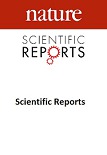Light modulates important physiological features of Ralstonia pseudosolanacearum during the colonization of tomato plants
Dublin Core
Título
Tema
Abstract
Ralstonia pseudosolanacearum GMI1000 (Rpso GMI1000) is a soil-borne vascular phytopathogen that infects host plants through the root system causing wilting disease in a wide range of agroeconomic interest crops, producing economical losses. Several features contribute to the full bacterial virulence. In this work we study the participation of light, an important environmental factor, in the regulation of the physiological attributes and infectivity of Rpso GMI1000. In silico analysis of the Rpso genome revealed the presence of a Rsp0254 gene, which encodes a putative blue light LOV-type photoreceptor. We constructed a mutant strain of Rpso lacking the LOV protein and found that the loss of this protein and light, influenced characteristics involved in the pathogenicity process such as
motility, adhesion and the biofilms development, which allows the successful host plant colonization, rendering bacterial wilt. This protein could be involved in the adaptive responses to environmental changes. We demonstrated that light sensing and the LOV protein, would be used as a location signal in the host plant, to regulate the expression of several virulence factors, in a time and tissue dependent way. Consequently, bacteria could use an external signal and Rpsolov gene to know their location within plant tissue during the colonization process.
Autor
Fuente
Editor
Fecha
Derechos
Información sobre Derechos de Autor
(Por favor lea este aviso antes de abrir los documentos u objetos)
La legislación uruguaya protege el derechode autor sobre toda creación literaria, científica o artística, tanto en lo que tiene que ver con sus derechos morales, como en lo referente a los derechos patrimoniales con sujeción a lo establecido por el derecho común y las siguientes leyes (LEY 9.739 DE 17 DE DICIEMBRE DE 1937 SOBRE PROPIEDAD LITERARIA Y ARTISTICA CON LAS MODIFICACIONES INTRODUCIDAS POR LA LEY DE DERECHO DE AUTOR Y DERECHOS CONEXOS No. 17.616 DE 10 DE ENERO DE 2003, LEY 17.805 DE 26 DE AGOSTO DE 2004, LEY 18.046 DE 24 DE OCTUBRE DE 2006 LEY 18.046 DE 24 DE OCTUBRE DE 2006)
ADVERTENCIA: La consulta de este documento queda condicionada a la aceptación de las siguientes condiciones de uso: Este documento es únicamente para usos privados enmarcados en actividades de investigación y docencia. No se autoriza su reproducción con fines de lucro. Esta reserva de derechos afecta tanto los datos del documento como a sus contenidos. En la utilización o cita de partes debe indicarse el nombre de la persona autora.Formato
Idioma
Tipo
Identificador
Document Item Type Metadata
Original Format
- Fecha de agregación
- November 3, 2021
- Colección
- Bibliografía Nacional Química
- Tipo de Elemento
- Document
- Etiquetas
- Bacterias, Enfermedades de las plantas, Tomates
- Citación
- Tano, Josefina, “Light modulates important physiological features of Ralstonia pseudosolanacearum during the colonization of tomato plants,” RIQUIM - Repositorio Institucional de la Facultad de Química - UdelaR, accessed July 26, 2024, https://riquim.fq.edu.uy/items/show/6422.
- Archivos

